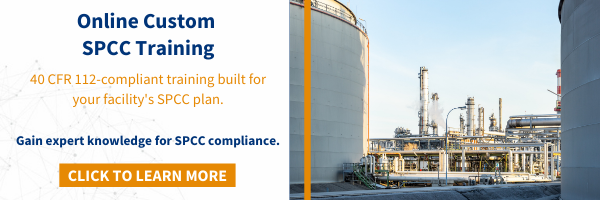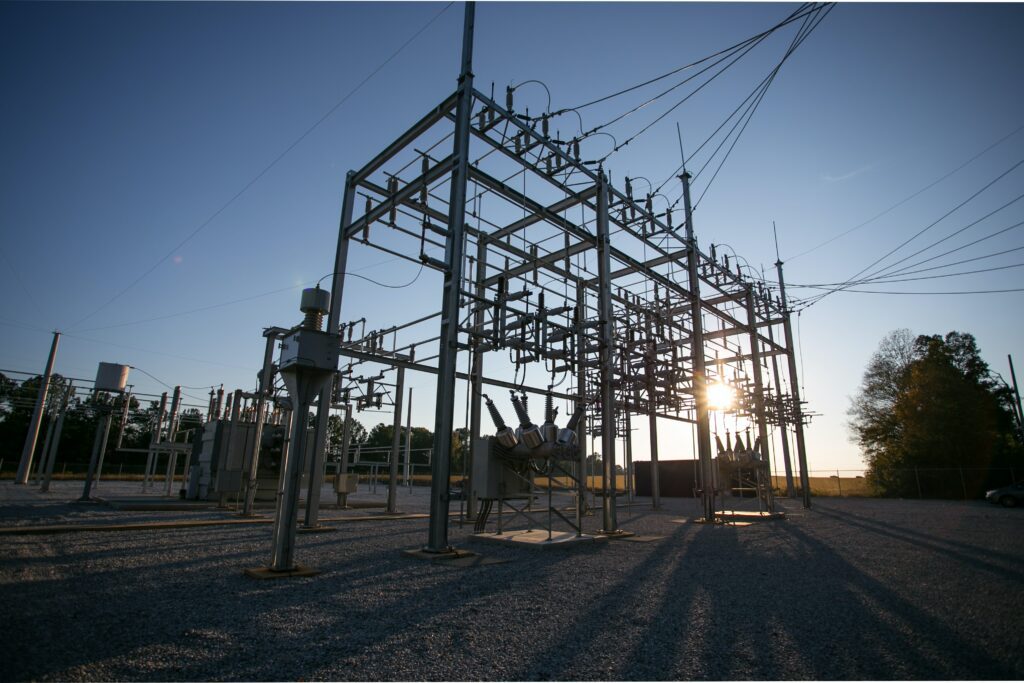If your facility uses a large amount of electricity and has transformers to conduct that electricity, such as an electric utilities facility or electric arc furnace facility, you may be subject to the Spill Prevention, Control and Countermeasure (SPCC) rule. Facilities with transformers generally store large quantities of oil, and following the appropriate transformer oil containment requirements to prevent oil spills and leakages is essential for environmental compliance.
Transformers, like the ones that sit at substations, are often unmanned, meaning oil leakages may not be detected right away. The nature of transformers also means that safe oil-handling may involve different requirements than other facilities.
An SPCC plan is vital, as it will help you effectively contain oil and lay out the steps for what to do should an oil-handling issue arise. Not only will this keep you compliant with environmental, health, and safety (EHS) standards, but it will keep your facility running smoothly by preventing costly oil spills.
What Is the SPCC Rule?
The SPCC Rule exists to prevent oil spills from reaching navigable waters or adjoining shorelines. It is codified under 40 CFR Part 112 and is administered and enforced by the United States Environmental Protection Agency (EPA).
Facilities that are subject to the SPCC Rule must also have an SPCC plan in place. This is a document that lays out how you have prepared the facility to prevent and control oil spills from their onsite oil storage and processes.
SPCC plans are unique to every facility depending on location, types of oil storage, amount of oil stored, and other factors. Compliance with the SPCC Rule also requires regular training of oil-handling personnel in accordance with the facility’s custom SPCC plan.
Transformer Oil Containment Requirements
Do I Need an SPCC Plan?
Depending on your facility usages and how much oil you are storing, you may need an SPCC plan if:
- your facility has transformers,
- you store 1,320 gallons or more oil in 55-gallon or larger containers, or
- your total aboveground oil storage is 10,000 gallons or greater, in which your SPCC plan will need to be certified by a professional engineer (PE).
If your total aboveground oil storage is less than 10,000 gallons and you have not had recent oil leakages, you may be able to self-certify your SPCC plan. There are two tiers for doing this:
How Are SPCC Plans Different for Transformers?
Transformers qualify as oil-filled operational equipment, which is a class of oil storage defined by the EPA. While most oil storage is required to have secondary containment for their bulk oil storage containers, oil-filled operational equipment is subject to different requirements.
For oil-filled operational equipment, there are two options for complying with the SPCC Rule. You must either have secondary containment or have an Oil Spill Contingency Plan (OSCP).
Secondary containment is common for facilities without transformers. However, they can introduce precipitation that can lead to safety hazards at electrical substations, so facilities with transformers may choose to implement an OSCP instead. Implementing an OSCP can also be more cost effective.
With an OSCP, the facility will monitor the facility for oil spills and leakages, develop an oil spill response plan, and provide manpower and resources to respond to any oil spills.

Your Transformer Oil Containment Requirements
If you must comply with the SPCC Rule, you will need to have an SPCC plan in place. This will require regular inspections, training, and plan upkeep.
Depending on who owns the transformers at your facility, there are some nuances when it comes to responsibility. If your facility owns the transformers, you are responsible for inspections and oil spill response. On the other hand, if the local power company owns the transformer at your facility, it is responsible for the inspections and ultimately for the response. However, the facility owner still holds responsibility for responding to and containing a spill as much as possible until the utility company can respond.
Get SPCC Support
If your facility has oil-filled operational equipment, taking responsibility for containing oil spills from that equipment is essential for meeting environmental compliance regulations. This may mean having an SPCC plan in place, having secondary containment at your facility, and/or having an OSCP.
For support in complying with the SPCC rule and meeting compliance regulations for your transformers or other oil-filled operational requirement, contact Tetra Tech’s experts at [email protected]. We can help you understand your requirements, develop an SPCC plan for your facility, and train your oil-handling personnel.






